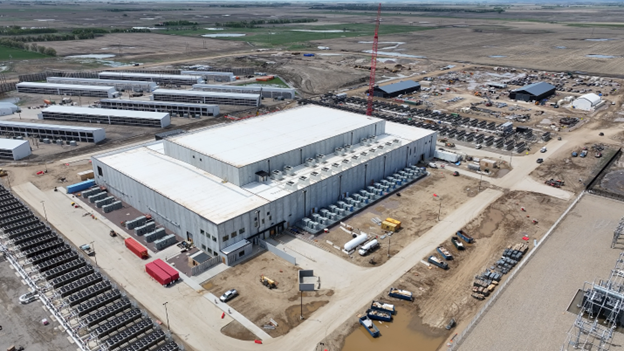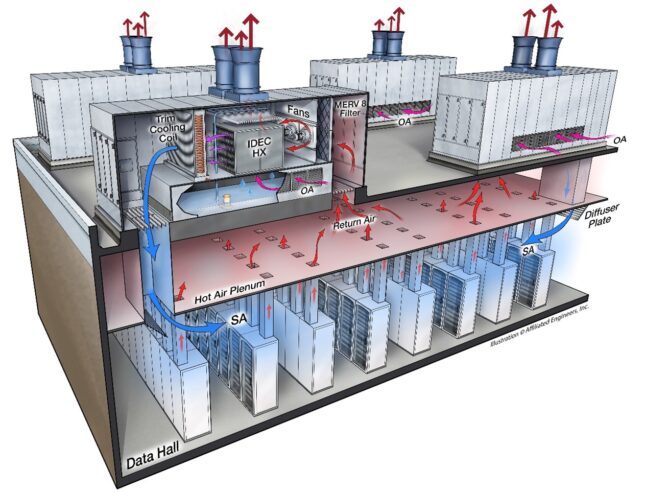When Applied Digital dropped their announcement about a $3 billion Polaris Forge 2 campus near Harwood, North Dakota, it wasn't just another data center story. This almost-300MW AI facility shows how America's building its AI backbone - small towns are eating Silicon Valley's lunch on infrastructure.
The Numbers That Actually Matter
The scale is fucking ridiculous - 1.8 million square feet of compute power across 900 acres of North Dakota farmland. At 280 megawatts, this single facility will consume more electricity than most cities. For comparison, Google's largest data center in Oklahoma uses about 200MW, so North Dakota just became home to one of the most power-hungry AI installations on the planet.
Groundbreaking starts September 2025, with the first phase operational by late 2026 and full capacity by early 2027. This isn't some distant vision - construction crews will be breaking ground next month in a town of 800 people who are about to watch their neighbor become an AI supercomputer.

Why Harwood Makes Perfect Sense (If You Think About It)
Look, North Dakota's got what AI needs and nobody else wants to admit it. Cass County Electric hooks you up with cheap power, winters do half your cooling for free, and 900 acres costs less than a shitty condo in Palo Alto.
The genius is in the location strategy. While tech companies fight over expensive real estate near major cities, Applied Digital realized you can train AI models anywhere with good internet connectivity. 40ms latency to Silicon Valley is fine for training jobs that run for hours.
Governor Kelly Armstrong gets it: Applied Digital "invested in people through workforce housing and created strong local partnerships" at their existing Ellendale facility. This isn't the usual tech company bullshit - they're actually treating rural communities like partners.
The Community Pushback Is Real (And Justified)
The August 25th town meeting was a shitshow. Hundreds of residents packed the Harwood Community Center, with more gathered outside, peppering Applied Digital representatives with hostile questions. People are scared their quiet town of 800 will be overwhelmed by a facility that consumes as much power as a small city.
Their concerns aren't stupid. Data centers can strain local infrastructure, create noise pollution, and fundamentally change community character. When Applied Digital says the facility will use "very little water" - equivalent to "about two households" - residents rightfully question whether that's the full picture.
But here's what the skeptics miss: 200+ permanent jobs, 700 during construction in a rural area represents massive economic impact. These aren't minimum-wage service jobs - data center technicians, engineers, and operations staff earn solid middle-class salaries.

The Infrastructure Gold Rush Is Just Beginning
This isn't an isolated project. Applied Digital's CEO Wes Cummins said "demand for AI capacity continues to accelerate, and North Dakota continues to be one of the most strategic locations in the country." Translation: expect more $3 billion announcements.
The company is already in advanced negotiations with a U.S.-based investment-grade hyperscaler for the Harwood campus. That probably means Microsoft, Google, Amazon, or Meta will be the primary tenant. These aren't speculative builds - they have committed customers before breaking ground.
Rural data centers are the future because cities literally can't handle this power draw - try getting 280MW approved in San Francisco, I fucking dare you. The grid infrastructure isn't there, the politics are worse, and the NIMBYs will shut you down before you even file the paperwork. As models get bigger and training requirements explode, companies need massive facilities somewhere that won't have rolling blackouts every summer.
What This Means for American AI Competitiveness
The Harwood facility is about more than just jobs for small-town North Dakota. This is about building America's AI backbone. While China builds massive government-funded AI research centers, America's betting on companies finding the cheapest places to run this shit.
North Dakota's advantage isn't just economic - it's strategic. Rural data centers are harder to hack, less likely to get hit by hurricanes, and harder to take down when shit hits the fan. Spreading AI capacity across the country instead of cramming it all into coastal cities means America's AI backbone doesn't collapse when Silicon Valley has problems.
The Harwood city council unanimously approved rezoning on September 2nd, signaling local government support despite community concerns. The second reading will finalize approval, but opposition seems focused on impact management rather than blocking the project entirely.
This thing's getting built. The question is whether other small towns will wake up and compete for the next $3 billion announcement. North Dakota just proved that rural communities can grab a piece of the AI gold rush instead of watching it all go to expensive coastal cities.
Expect more $3 billion announcements in similar rural locations over the next 18 months. The infrastructure gold rush is just beginning, and smart communities are already positioning themselves as AI-friendly alternatives to expensive coastal markets.

